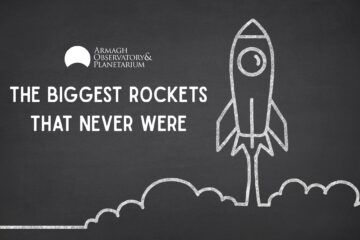So we know the biggest rocket that ever was, was the mighty Saturn V that took NASA’s Apollo astronauts to the Moon. But what about the biggest rockets that never were? Could there have been some other rockets that, had they been built, would’ve rivalled the Apollo era’s champion launcher?
One rocket that undoubtedly deserves a mention was the USSR’s N1 rocket. Developed from 1959 and referred to in Russian as ‘rocket-carrier’, this cone-shaped giant was the USSR’s answer to the American’s manned super-heavy launcher to the Moon, built for the purpose of taking humans to the Moon and beyond. At more than 100 metres high on the launchpad and 17 metres wide at its base, the N1 and Saturn V stood head-and-shoulders above any other rockets that have ever been built.

Manufactured by the largest company of the Russian Space industry, Energia, the N1 was fired by no less than thirty NK-15V engines, actually giving it 2, 600, 000 pounds of thrust more than its American rival and making it the most powerful ‘first stage’ rocket ever to be built. Similar to its US counterpart the payload of N1-3L’s five stacked rocket stages would have enabled 1 cosmonaut to land on the Moon and 2 to orbit it.
Unlike the Saturn V however, the N1 rocket used the somewhat ‘safer’/more stable hypergolic fuel as propellant, whereby ignition is achieved chemically and only when the two fuels come in contact with each other, causing spontaneous combustion.
We may therefore wonder why this impressive rocket and its name are not better known? The answer – international secrecy. The Soviet Union did not want the USA to know of their intention to compete to be the first nation to send humans to Space and the Moon and so kept the N1 a secret for as long as possible. The other and more critical reason is that it failed, not once, but in fact during all 4 launches.

Thanks to a rushed program of ground tests, undiscovered plumbing issues and problems with the clustered engine arrangement caused the huge 105-metre Space-bound ‘spike’ to either fail mid-air or end with a bang. N1’s second attempted flight in July 1969 saw Launch Complex 110 East destroyed by a detonation that flung debris as far as 10 kilometres and that could be seen in the dark from 35 kilometres away. Later that very same month astronauts from the other side of the Pacific landed on the Moon and the ‘Space Race’ was over. Notwithstanding, the USSR didn’t give up on their rocket, with a third failed launch taking place in 1971, followed by what would be the final doomed attempt at Baikonur in 1972.
Plans were afoot to use a different engine (the NK-33) for a new improved version of the N1 rocket, the ‘N1F’, but after a change of government and cuts to the Soviet Space program, the N1 project was cancelled in 1976 before this brilliant but flawed super-heavy launcher could ever make it to Space. Despite all this, the N1 rocket did manage to secure its place in history, but perhaps for a slightly different reason from the one intended, for creating the loudest man-made non-nuclear explosion on record.



0 Comments